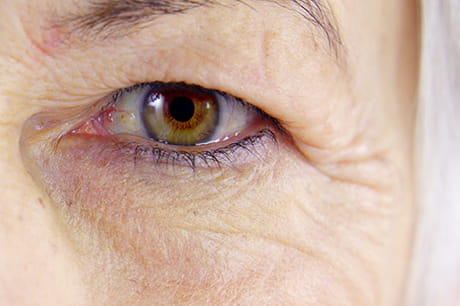5 things to know before getting Botox
Thinking about Botox treatments? Here are 5 things to know before booking your appointment.
For many years, Botox has been well known (and loved) for its ability to help reduce the appearance of fine lines and wrinkles, including crow’s feet near the eyes and creases on the forehead. It can even be used in the treatment of other conditions such as chronic migraines and excessive sweating (also called hyperhidrosis).
What is Botox?
Botox is an injectable drug made from botulinum toxin type A. Commonly used to temporarily smooth wrinkles and give skin a more youthful appearance, Botox is used by trained professionals for both cosmetic and medical purposes.
“Botox can help you turn back the clock a few years, all while still looking like you,” says Dr. Christine Cabell, dermatologist at Geisinger East Mountain Specialty Clinic in Wilkes-Barre. “It can also be used in the treatment of chronic migraines, excessive sweating, overactive bladder, crossed eyes and severe neck spasms.”
Considering getting treatments? Here are 5 things to know before scheduling your appointment:
1. Look for an experienced doctor.
No matter your reason, you should always go to a board-certified dermatologist, plastic surgeon or other licensed medical professional for Botox treatments. They have the training and experience necessary to help you get the results you want as safely as possible.
“And should you experience any side effects, they’re well-equipped to treat you,” adds Dr. Cabell.
2. It’s safe (when given by a medical professional).
Although Botox is a toxin produced by the bacterium Clostridium botulinum – one that causes botulism, or a severe form of food poisoning – small doses, such as those given during Botox treatments, are considered safe.“The overall risk with Botox treatments is very minimal,” says Dr. Cabell. “However, if you’re pregnant or breastfeeding, you should wait to receive treatments.”
3. It doesn’t “erase” wrinkles.
Some wrinkles, like forehead lines, form due to the contraction of the muscle located directly underneath them. Botox works by blocking the nerve signals that trigger these muscle contractions. When injected, it stops the muscles from contracting and as a result, wrinkles will relax and appear smoother.“The same goes for its other uses,” adds Dr. Cabell. “For example, when injected directly to the part of the body that sweats excessively, Botox blocks the nerve signals that are causing the sweat glands to be overactive and prevents sweating.”
4. You may feel some discomfort.
While experiences vary from person to person, pain from injections is typically minimal. “The needle used for Botox injections is very small,” explains Dr. Cabell. “To help keep you comfortable, a numbing cream — called a topical anesthetic — or cold pack can be applied before the injections are given.”As for side of effects of Botox, they’re typically minor. Slight bruising and redness at the injection spots are the most common. Slightly more serious, but rare side effects include headache, nausea and temporary facial drooping.5. When it comes to results, be patient.
If you’re considering getting Botox, you won’t see results immediately after treatment. In fact, it can take up to seven days to see the full results of your injections.And how long does Botox last? “In general, you can expect the results to last three to four months,” says Dr. Cabell. “As the muscle movement slowly returns, the lines and wrinkles will reappear, so you may need additional treatments to maintain your desired result.”
Schedule a consultation
Whether you want to refresh your appearance, feel and look your best for a big event or are considering treatments to help ease symptoms of a medical condition, it’s important to meet with a trained medical professional for a consultation first.
“It’s important to discuss your priorities and treatment goals with your doctor,” explains Dr. Cabell. “He or she can make recommendations, help set expectations and then create a personalized treatment plan that works for you.”
Next steps:
Learn more about Dr. Christine Cabell
Find a cosmetic dermatologist near you





